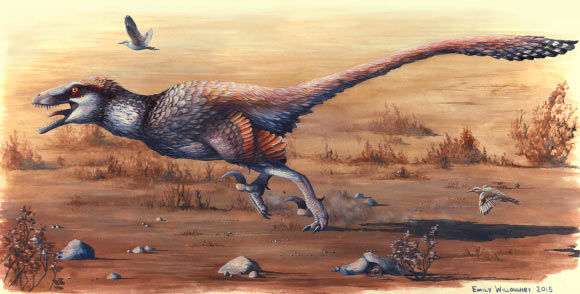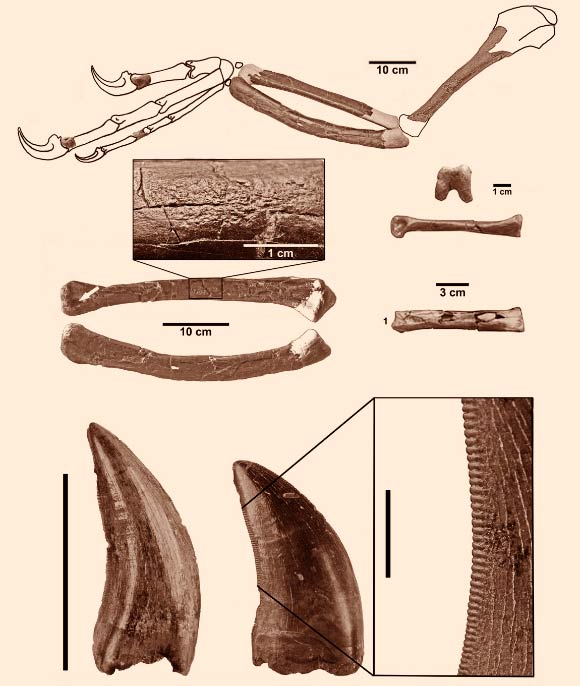Paleontologists have discovered what they say is a new giant raptor that lived in what is now South Dakota during the Maastrichtian stage of the Upper Cretaceous, approximately 66 million years ago.

Life restoration of Dakotaraptor steini running with the sparrow-sized birds Cimolopteryx petra, while the mammal Purgatorius can be seen in the foreground. Image credit: Emily Willoughby.
At 18 feet (5.5 m) long, the new creature is among the largest of the carnivorous, two-legged dinosaurs called dromaeosaurids, or ‘raptors.’
“This new predatory dinosaur fills the body size gap between smaller theropods and large tyrannosaurs that lived at this time,” said team member Dr David Burnham, a paleontologist at the University of Kansas and a co-author of a paper in the journal Paleontological Contributions.
The dinosaur represents both a new genus and species, which Dr Burnham and his colleagues have named Dakotaraptor steini.

“Dakota, referring to the geographic location of the discovery as well as the Dakota First Nations Tribe, plus raptor, Latin for plunderer,” they explained.
“The specific name honors paleontologist Walter W. Stein.”
The skeletal remains of an adult Dakotaraptor steini were extracted from rocks in the Hell Creek Formation in South Dakota in 2005.
Other isolated bones of the species, as well as isolated teeth, were discovered at another location within the same quarry.

Top: wing elements of Dakotaraptor steini and the reconstructed left wing. Bottom: teeth of Dakotaraptor steini. Image credit: Robert A. DePalma et al.
“This Cretaceous period raptor would have been lightly built and probably just as agile as the vicious smaller theropods, such as the Velociraptor,” said lead author Dr Robert DePalma of the Palm Beach Museum of Natural History.
“The both fossils showed evidence of quill knobs where feathers would have been attached to the forearm of the dinosaur. This also demonstrates that flightlessness evolved several times in this lineage leading to modern birds.”

According to the team, Dakotaraptor steini would have been occasionally in direct competition with smaller tyrannosaurid dinosaurs such as young Tyrannosaurus rex or Nanotyrannus lancensis, which, at an adult length of 20 – 30 feet (6 – 9 m), were not much larger than the new species.
“The presence of this new predator expands our record of theropod diversity in latest Cretaceous Laramidia, and radically changes paleoecological reconstructions of the Hell Creek Formation,” the scientists said.
Dakotaraptor steini is also the third giant dromaeosaurid from the North American Cretaceous, and the most recent in the fossil record worldwide.
Source: sci.news








